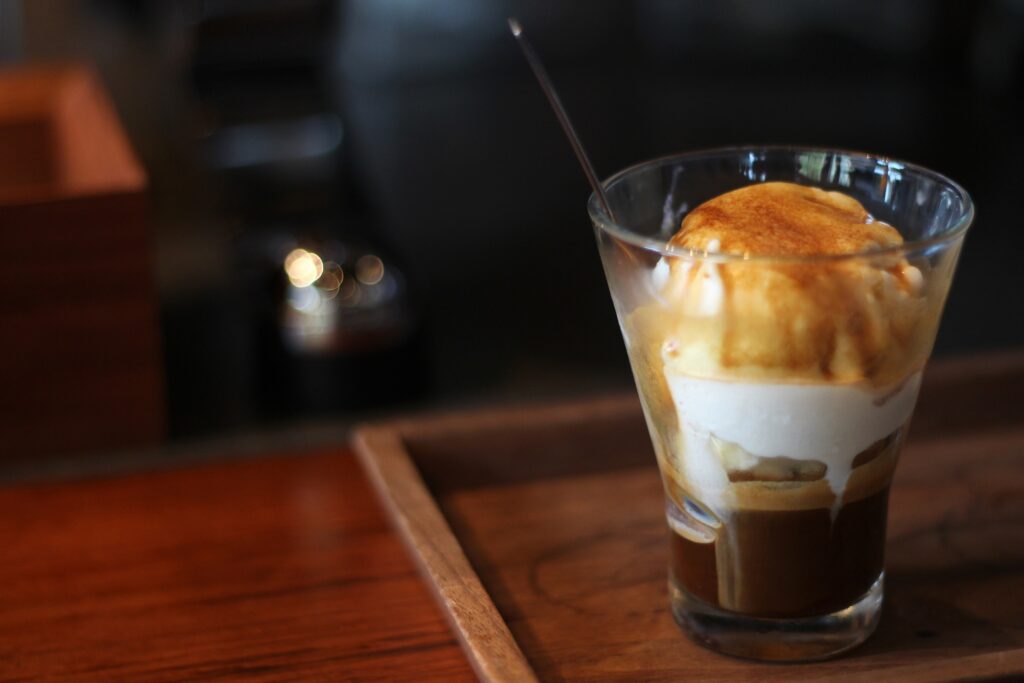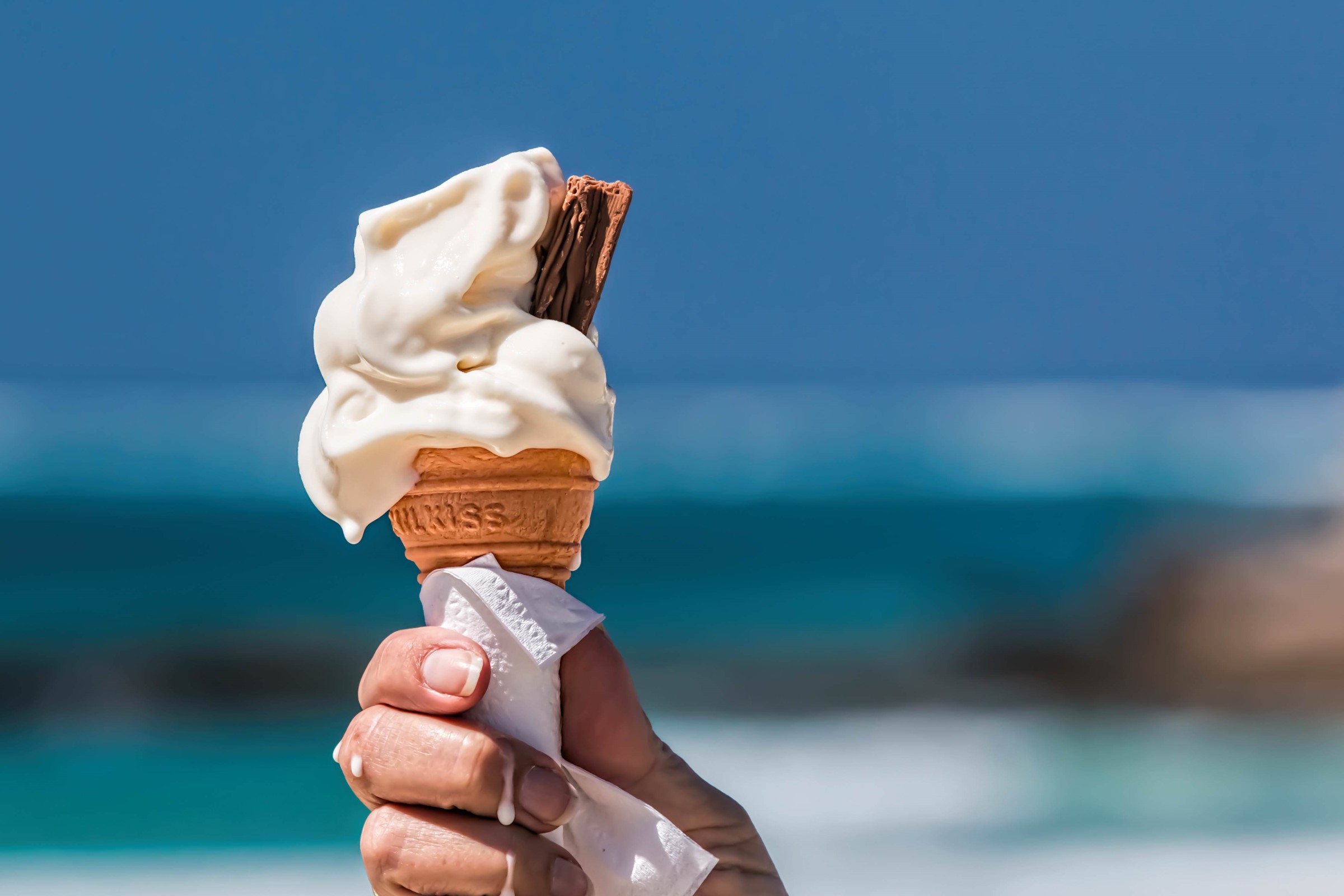There is a secret to unlocking the full potential of a fine spirit, and it isn’t a drop of water or a chilled stone. It is, perhaps unexpectedly, a spoonful of ice cream. This isn’t merely a dessert pairing; it’s a method rooted in the intricate science of taste and aroma. For anyone who appreciates the craft of distillation, the goal is always to experience the full spectrum of flavor—the subtle notes of oak, fruit, or spice that define a spirit’s character.
The perfect canvas for this exploration, the medium that can calm, carry, and elevate a spirit, is… ice cream!
We dedicate this guide to that discovery. We will journey deep into the principles of this remarkable pairing, explore the complex architecture of infused ice cream, and provide a comprehensive map for your own flavor explorations. Art and science meet here. In the freezer.
Why Alcohol in Ice Cream? The Convergence of Crafts
Our fascination with spirit-infused ice cream emerges at a special moment in time. We are living through a renaissance of craft. On one hand, the world of spirits has exploded with small-batch distilleries resurrecting old techniques and experimenting with unique local ingredients. On the other, the artisanal food movement champions quality, transparency, and a renewed focus on raw materials & sustainability.
Elliot’s exists at the intersection of these two movements. We see the meticulous work of the craft distiller—the careful selection of grains, the patient aging in specific casks, the precise art of the blend—and we believe it deserves to be experienced in a new context. This article is born from that belief: that by understanding the deep connections between these two worlds, we can create something that is more than the sum of its parts.
The Science of the Palate: A Deeper Look at Pairing
To understand why pairing ice cream with a spirit proves so transformative, we must first understand how our senses perceive flavor. It’s a complex interplay of taste, temperature, texture, and—most importantly—aroma.
Taming the Trigeminal Nerve
When you sip a spirit, the “burn” you feel comes from your trigeminal nerve, which processes sensations of temperature, texture, and chemical irritation (a sense known as chemesthesis). The ethanol in the spirit strongly activates this nerve’s heat receptors. While a little of this sensation adds invigorating warmth, too much can overwhelm the senses, creating a defensive wall that blocks more subtle flavors.
Ice cream provides a two-fold solution. First, its cold temperature pre-emptively cools the nerve endings, reducing their sensitivity. Second, the milk fats (butterfat) and proteins (casein) in the cream coat the palate. This insulating layer acts as a buffer, softening the ethanol’s impact and transforming the “burn” into a gentle, pleasant warmth.
Unlocking Aroma: The Retronasal Pathway
Our olfactory system actually detects much of what we call “flavor” as aroma. This happens in two ways: orthonasal olfaction (smelling through your nose before tasting) and retronasal olfaction (aromas traveling from your mouth up into your nasal passages as you chew, swallow, and exhale).
The retronasal pathway plays a critical role in perceiving a spirit’s deep complexity. When alcoholic heat remains untamed, it can overpower these volatile aromatic compounds. By calming the burn, ice cream allows these delicate aromas—the fruity esters, the smoky phenols, the herbal terpenes—to travel the retronasal pathway unimpeded. You, the taster, can literally appreciate more of the spirit’s intended character.
The Science of Infusion: The Architecture of Alcoholic Ice Cream
Pairing a spirit with ice cream is a discovery. Infusing a spirit into ice cream is an art form we build on a foundation of food science. Here, alcohol transitions from a partner to a structural pillar of the ice cream itself.
Freezing Point Depression: The Secret to Smoothness
The microscopic size of its ice crystals defines the luxurious texture of premium ice cream. This is where alcohol’s most important physical property comes into play: freezing point depression. This colligative property means the effect depends on the number of solute particles dissolved in the ice cream base.
Both sugar and alcohol act as solutes that lower water’s freezing point. However, ethanol has a much lower molecular weight than sucrose, meaning that for the same weight, more alcohol molecules go to work. This makes alcohol incredibly efficient at disrupting the crystalline lattice structure that water molecules seek to form as they freeze. By getting in the way, the alcohol ensures we create only microscopic ice crystals, which yields a product that is exceptionally smooth and soft-scooping even at low temperatures.
Overrun: The Management of Air
“Overrun” is the technical term for the percentage of air we incorporate into ice cream during the churning process. It marks the difference between a dense, gelato-style product and a light, airy commercial product. The presence of alcohol can destabilize the protein network that holds air bubbles in place. Therefore, crafting a spirit-infused ice cream requires our precise control over the churning speed and temperature, which typically yields a lower-overrun, denser product. This density provides a richer mouthfeel and serves as a more stable carrier for the spirit’s complex flavors.
Emulsion and Flavor Release
Ice cream is a complex emulsion of fat globules, air bubbles, and ice crystals suspended in a water-sugar solution. Alcohol introduces another variable. It can act as a co-surfactant, but can also interfere with the delicate protein films that keep the emulsion stable. The craft lies in formulating a base that can hold the spirit without breaking, ensuring a perfectly smooth texture rather than a greasy or icy one.
Furthermore, alcohol acts as a solvent for a wide range of flavor compounds. This means that a spirit-infused ice cream creates a more complex flavor-release matrix. As a spoonful melts in your mouth, different compounds are released at different times—some from the water phase, some from the fat, and some from the alcohol—creating a dynamic, evolving taste experience that is impossible to achieve through simple pairing alone.
An Experiment in Taste: The Pairing Method
To understand this principle for yourself, you can conduct a simple tasting at home. This is the foundation of our philosophy at Elliot’s, where we take this principle to its ultimate conclusion in our finished ice creams.
The Method: First, take a small spoonful of ice cream, allowing it to coat the palate. Then, take a contemplative sip of the spirit. Observe the difference in heat, the emergence of new flavors, and the texture of the finish.
Select Your Spirit: Choose a spirit whose character you wish to explore more deeply.
Select Your Ice Cream: A pure, high-quality vanilla bean or sweet cream offers a neutral yet complementary base.
The Spirit Guide: A Comprehensive Journey Through Flavor
Whisky
A vast and varied category, whisky’s core flavors of grain and wood make it a natural match for cream. Our own deep dive into this world began with whisky, and we’ve since chronicled the entire journey of discovering how ice cream transforms the whisky tasting experience.
- Bourbon: Distillers make Bourbon from at least 51% corn and age it in new charred oak barrels, which imparts notes of vanilla, caramel, coconut, and toasted wood. Pairings: A classic vanilla bean ice cream is sublime, as is pecan, maple, or even a brown butter flavor that complements the barrel’s nuttiness.
- Rye: With its 51% rye mash bill, this whisky is bourbon’s spicier cousin, featuring notes of black pepper, baking spice, and mint. Pairings: Look for ice creams that can stand up to the spice, like cinnamon, ginger, or a spiced apple crumble.
- Scotch: This category offers a wide spectrum. For unpeated, malty Speyside scotches with notes of honey and fruit, try a honey-lavender or a simple sweet cream ice cream. For the heavily peated, smoky, and briny scotches of Islay, the classic pairing is a salted caramel, where sweet and savory collide in spectacular fashion.
Rum & Rhum Agricole
- Molasses-Based Rum: The majority of rums are distilled from molasses. Aged expressions from Barbados or Guatemala offer round, sweet notes of toffee, tropical fruit, and spice. Pairings: These are a dream with coffee, dark chocolate, coconut, or banana-based ice creams.
- Rhum Agricole: Distilled from fresh-pressed sugarcane juice, primarily in the French Caribbean, this style is grassy, earthy, and funky. Pairings: It requires a brighter partner. Think lime sorbet, mango, or an herbal ice cream with basil or mint.
Tequila & Mezcal
The world of agave spirits is far more than just shots and margaritas.
- Tequila: A highland tequila will be more citrusy and floral, while a lowland tequila is more earthy and robust. An aged (Reposado or Añejo) tequila, with its notes of oak and cooked agave, is fantastic. Pairings: Pair an Añejo with a rich cinnamon or chili-chocolate ice cream to complement its barrel spice.
- Mezcal: Produced by roasting the agave hearts in earthen pits, mezcal has a characteristic smokiness. Pairings: This smoke is beautiful with fruit. Try a scoop of grilled pineapple, passionfruit, or grapefruit sorbet.
Brandy
This category includes any spirit distilled from fermented fruit mash.
- Cognac & Armagnac: Distilled from grapes and aged in French oak, these brandies have notes of stone fruit, flowers, and a nutty character called rancio in older expressions. Pairings: Complement these with flavors of cherry, almond, fig, or a subtle Earl Grey tea ice cream.
- Calvados: An apple brandy from Normandy, France, its crisp, baked-apple profile is a perfect match for salted caramel, cinnamon, or a rich vanilla custard ice cream.
Gin & Liqueurs
- Amari & Liqueurs: The bittersweet complexity of an Italian amaro can be balanced by a rich, dark chocolate or orange-zest ice cream. A sweet orange liqueur like Grand Marnier is, of course, a natural fit for both chocolate and vanilla.
- Gin: A spirit whose flavor is derived from juniper berries and other botanicals. A classic London Dry with its assertive juniper and citrus notes pairs wonderfully with a lemon or grapefruit sorbet. A more contemporary, floral gin works beautifully with herbal flavors like basil or a delicate rose ice cream.
Taiwan Spirits
Elliot’s is headquartered in Taipei, Taiwan, so we have to call out some alcohols and liquors that are unique to Taiwan!
- Kaoliang Liquor (高粱酒): At the forefront of Taiwan’s spirits is Kaoliang liquor, a powerful white liquor distilled from fermented sorghum. With an alcohol content typically ranging from 38% to a formidable 63% ABV, this powerful spirit greets you with a pungent, earthy aroma of fermented sorghum, often with subtle notes of pineapple and yeast. The tasting experience is intensely fiery and dry, delivering a clean, crisp burn that warms the entire body, leaving a lingering, subtly sweet aftertaste. A bold ice cream featuring roasted pineapple and toasted pecans would complement the liquor’s intense, earthy sorghum profile.
- Millet Wine (小米酒): This sweet, unfiltered, and often cloudy beverage is traditionally made by fermenting millet, a staple crop for many of Taiwan’s indigenous tribes. It has a sweet, unfiltered, and porridge-like flavor profile with a gentle yeastiness and a slightly tangy finish. It offers a smooth, often creamy mouthfeel, making for a comforting and easy-to-drink experience that is more akin to a rustic nectar than a sharp spirit. A creamy ice cream base with hints of honey and dried cherries would echo the wine’s sweet, yeasty character.
- Taiwanese Whisky (e.g. Kavalan): Defined by the subtropical climate, Taiwanese whisky bursts with complex notes of tropical fruit like mango and passionfruit, layered with honey, vanilla, and a rich nuttiness from accelerated aging. The palate is typically oily and full-bodied, delivering a sophisticated, multi-layered finish that is remarkably smooth despite its high proof. A tropical-inspired ice cream with mango, passionfruit, and a touch of vanilla would mirror the whisky’s complex flavor profile.
- Plum Wine (梅酒): A sweet and tangy liqueur made by steeping green plums in rice wine and sugar. Taiwanese plum liqueur presents a delightful balance of intense sweetness and a sharp, fruity tartness, capturing the essence of green plums. The tasting experience is rich and nectar-like, with a velvety, syrupy consistency that coats the mouth, making it a perfect dessert-like aperitif. A tart green plum ice cream with a touch of honey and candied ginger would highlight the liqueur’s sweet-tangy essence.
- Shaoxing Wine (紹興酒): This amber-hued rice wine offers a complex, savory flavor with distinct nutty and earthy notes, rounded out by hints of caramel and dried fruit. It has a smooth, warming, and slightly viscous mouthfeel, with a lingering umami-rich finish that makes it a classic pairing for food. An umami-rich ice cream with caramel, toasted nuts, and a hint of dried fruit would complement the wine’s complex, savory notes.
- Tea Liqueurs (茶酒): Tea liqueurs elegantly capture the specific profile of their base tea, whether it’s the roasted, floral notes of Oolong or the rich maltiness of a black tea. The flavor is a sophisticated balance of the tea’s natural tannins and fragrance against the spirit’s sweetness, resulting in a smooth, refined, and aromatic sipping experience. An Oolong or black tea ice cream with a subtle floral or malty undertone would beautifully capture the liqueur’s sophisticated tea essence.
P.S. All of the ice cream and alcohol flavor pairings described above were generated by our proprietary Elliot’s AI!
The Elliot’s Method: The Synthesis of Spirit and Cream
At Elliot’s, we pursue the perfect synthesis of spirit and cream. Our ice creams are not merely flavored with spirits; they are built around them, using the principles of food science to achieve a result that pairing alone cannot. In our Elliot’s Kavalan Whisky ice cream, for example, we carefully calibrate the overrun to be lower, creating a dense, rich texture that allows the whisky’s complex congeners to linger on the palate, releasing notes of charred oak, vanilla, pepper, spice, dates and other fruits, such as ripe melon and mango in waves. Our process is a deliberate composition, a testament to the potential that is unlocked when alcohol and ice cream are brought together as one.
Conclusion: Your Journey in Tasting Begins
The relationship between spirits and ice cream is one of profound synergy. It is a partnership where the science of texture and temperature unlocks the art of the distiller. It transforms a simple dessert into a tool for discovery and a fine spirit into a more approachable, nuanced experience. The world of flavor is vast and intricate, and we believe that the most exciting explorations happen when we challenge traditional boundaries and embrace the delicious possibilities that lie at the intersection of craft.
To experience this philosophy firsthand, explore the full collection of Elliot’s alcoholic ice creams.
Frequently Asked Questions (FAQ)
- Q: Can you get drunk from alcoholic ice cream?
While our ice cream is made with real spirits, the alcohol by volume (ABV) of the final product is quite low, typically under 3-3.5%. You would have to consume quite a bit to feel tipsy, but everyone is different, so eat with caution! We will say that we designed the ice cream for flavor, not effect. - Q: Why is alcohol-infused ice cream often more expensive?
The cost reflects two things: the quality of the ingredients (we use premium craft spirits, not artificial flavorings) and the complexity of the process. Properly infusing alcohol requires a more difficult, small-batch production method to maintain perfect texture and flavor balance. - Q: What is the ideal temperature for serving alcoholic ice cream?
There is no ideal temperature, but we suggest serving it as soon as it is scoopable and experiencing the full spectrum of flavors that are unlocked as the ice cream melts. As the ice cream softens slightly, the alcohol’s aromatic compounds become more volatile, so different flavors are released. - Q: How should I store it?
Store it in the coldest part of your freezer, typically the back. Because it freezes at a lower temperature, it can become too soft if stored on the freezer door. Ensure the lid is sealed tightly to prevent ice crystal formation. Alcoholic ice cream is especially sensitive to temperature changes, so the lower and more stable the temperature the better. - Q: I have another question!
If there’s anything else you’d like to know about our process or our flavors, please don’t hesitate to get in touch!



